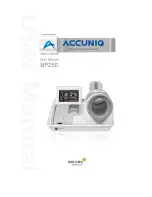
28
8. GLOSSARY
8. GLOSSARY
Color Temperature
Color temperature is a method to measure the white color tone, generally indicated
in degrees Kelvin. At high temperatures the white tone appears somewhat blue,
while at lower temperatures it appears somewhat red. Computer monitors generally
give best performance at high temperature settings.
5,000K: Often used in printing industry.
6,500K: Good for video-image display.
9,300K: Default setting for your EIZO monitor.
Convergence
Convergence is the monitor’s ability to precisely illuminate specific phosphors and
line them up properly in order to produce pure color.
Cutoff and Gain
Monitors use red, green and blue (R, G, and B) to convey color information. They
use an additive method to combine different amounts of the primary colors to
produce a desired color. In other words, monitors start with no light (black) and
add percentages of red, green and blue to make colors. White is usually produced
by adding the same amount of all three colors, where black is usually produced by
adding no color. However, colors are not only determined by the balance but also
the intensities of R, G, and B (how bright they are) which we call Gain, and the
saturation of R, G and B (how vivid or dull they are) which we call Cutoff.
Degaussing
“Degaussing” refers to the process of removing magnetic-field effects from the
monitor. Operation of the monitor within a magnetic field may adversely effect
color purity. Degaussing can be used to correct the problem.
Moiré
Moiré refers to an interference pattern of dark wavy lines on the screen. It is
not a defect, but rather an interference phenomenon caused by the relationship
between the phosphor layout and the imaging signal. Moiré is often an
indication of a good focus level. Moiré is particularly noticeable when using a
light-gray or every-other-dot pattern background. Although moiré can not be
eliminated, it can be reduced with the moiré reduction feature.
Содержание FLEXSCAN T765 -
Страница 1: ......







































